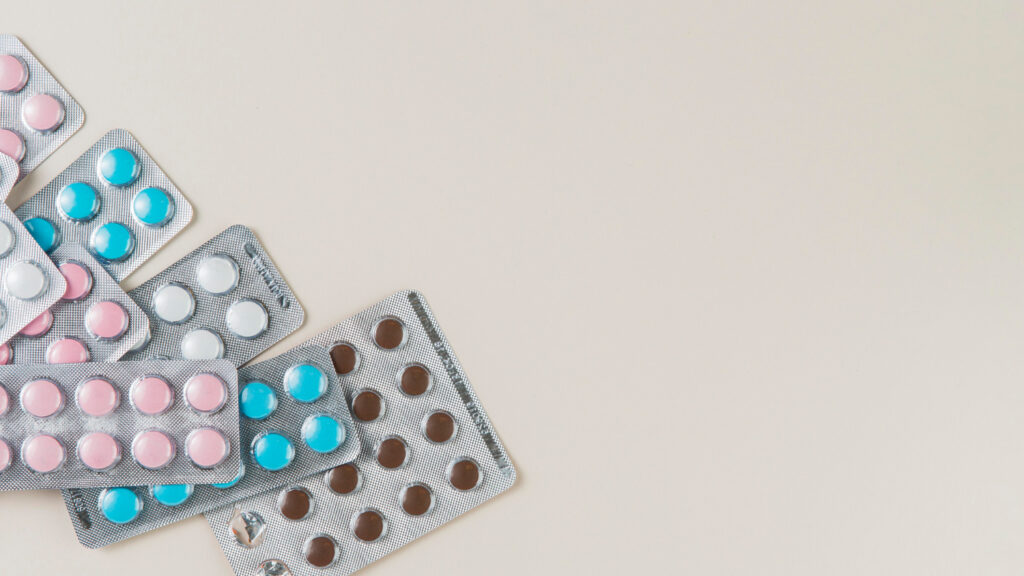
Erectile dysfunction, often referred to as impotence, is a common condition that affects millions of men worldwide. This article aims to simplify the complex topic of erectile dysfunction, exploring its causes, related diseases, and the drug treatments available to help men regain their confidence and sexual function.
What is Erectile Dysfunction (ED)?
Erectile dysfunction, or ED, is the inability to achieve or maintain an erection sufficient for sexual intercourse. This condition can be frustrating and emotionally distressing, impacting not only a man’s self-esteem but also his overall quality of life.
Common Causes of Erectile Dysfunction:
- Physical Factors:
a. Blood Flow Issues: Problems with blood flow to the penis can hinder erection.
b. Nerve Damage: Conditions like diabetes can damage nerves responsible for erections.
c. Hormonal Imbalance: Low testosterone levels can contribute to ED.
d. Medications: Some drugs may have side effects that lead to ED. - Psychological Factors:
a. Stress and Anxiety: Mental stress can affect sexual performance.
b. Depression: Mood disorders can interfere with sexual function.
c. Relationship Issues: Problems in a relationship can lead to ED.
Symptoms of Erectile Dysfunction
Erectile dysfunction (ED) is characterized by the consistent inability to achieve or maintain an erection sufficient for satisfactory sexual performance. Symptoms of erectile dysfunction may vary in severity and can impact both physical and psychological well-being. Here are some common symptoms associated with ED:
- Difficulty Achieving Erection: Difficulty in achieving an erection, even with sexual stimulation, is a primary symptom of erectile dysfunction. Men may find it challenging to attain a firm enough erection for sexual intercourse.
- Difficulty Maintaining Erection: Another common symptom is the inability to maintain an erection long enough to complete sexual activity. Erections may be lost before ejaculation, leading to frustration and dissatisfaction.
- Reduced Erectile Rigidity: Men with ED may experience reduced rigidity or firmness of the penis during sexual arousal. The penis may not become as hard as usual, making penetration difficult or impossible.
- Decreased Libido: While erectile dysfunction primarily affects the physical ability to achieve and maintain erections, it can also impact sexual desire or libido. Men may experience a reduced interest in sexual activity due to concerns about their performance or previous difficulties with erections.
- Premature Ejaculation or Delayed Ejaculation: Erectile dysfunction can sometimes coexist with other sexual dysfunctions, such as premature ejaculation (reaching orgasm too quickly) or delayed ejaculation (difficulty reaching orgasm). These issues may further exacerbate performance anxiety and relationship strain.
Exercises for Erectile Dysfunction:
1. Cardiovascular Exercises:
- Cardiovascular: Cardiovascular exercises, such as brisk walking, jogging, cycling, or swimming, improve blood circulation throughout the body, including the genital area. Improved blood flow to the penis can enhance erectile function by facilitating the delivery of oxygen and nutrients to the erectile tissues.
2. Pelvic Floor Exercises (Kegel Exercises):
- Pelvic Floor: Kegel exercises target the pelvic floor muscles, which play a crucial role in erectile function and urinary control. Strengthening these muscles can improve the ability to achieve and maintain erections by enhancing the support and stability of the penis during sexual activity.
3. Aerobic Exercises:
- Aerobic: Aerobic exercises, such as jumping jacks, running, or dancing, promote cardiovascular health and increase nitric oxide production in the body. Nitric oxide helps relax blood vessels, including those in the penis, leading to improved blood flow and better erectile function.
4. Resistance Training:
- Resistance: Resistance training, such as weightlifting or bodyweight exercises, can boost testosterone levels and improve overall strength and stamina. Higher testosterone levels contribute to enhanced libido and sexual performance, potentially improving erectile function.
5. Yoga and Tai Chi:
- Mind-Body Practices: Yoga and Tai Chi focus on mindful movement, breathing techniques, and relaxation, which can reduce stress and anxiety, common contributors to erectile dysfunction. These practices also promote flexibility, balance, and mindfulness, enhancing overall sexual well-being.
Diseases Linked to Erectile Dysfunction:
Certain medical conditions often coincide with ED, including:
- Diabetes: High blood sugar levels can damage nerves and blood vessels, leading to ED.
- Heart Disease: Cardiovascular issues can reduce blood flow to the penis, causing ED.
- Hypertension: High blood pressure can damage blood vessels, affecting erections.
- Obesity: Excess weight can contribute to both physical and psychological ED causes.
- Prostate Conditions: Enlarged prostate or prostate cancer treatments may impact erectile function.
Drug Treatments for Erectile Dysfunction:
The good news is that there are effective drug treatments for ED. These medications work by improving blood flow to the penis, making it easier to achieve and maintain an erection. Some commonly prescribed drugs include:
- Sildenafil (Viagra): This well-known medication helps increase blood flow to the penis, usually taken 30 minutes to 1 hour before sexual activity.
- Tadalafil (Cialis): Similar to Viagra, Cialis offers a longer-lasting effect, often referred to as the “weekend pill.”
- Vardenafil (Levitra): Another option that enhances blood flow, often with quicker onset compared to Viagra.
- Avanafil (Stendra): Known for its rapid action, Stendra can be taken as little as 15 minutes before sexual activity.
How These Drugs Work:
These medications belong to a class called phosphodiesterase type 5 (PDE5) inhibitors. They relax the muscles in the blood vessels of the penis, allowing increased blood flow when sexually stimulated. This results in an improved ability to achieve and sustain an erection.
Considerations and Side Effects:
It’s important to consult a healthcare provider before using ED medications. Common side effects may include headache, flushing, indigestion, and nasal congestion. They may not be suitable for individuals with certain medical conditions or taking specific medications.
Summary :
Erectile dysfunction is a prevalent issue affecting many men, often linked to physical and psychological factors. Understanding its causes, related diseases, and the available drug treatments can help men regain their confidence and enjoy a fulfilling sex life. Consult with a healthcare professional to determine the most suitable treatment option for you and address any underlying health concerns. Remember, you’re not alone, and there are effective solutions to overcome erectile dysfunction.


Pingback: common health conditions - MedTimes
Pingback: Boost Your Testosterone Levels Naturally - Modern HealthMe